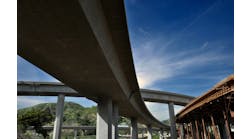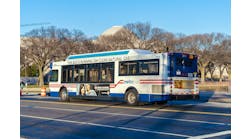When COVID-19-related lockdowns took effect in March 2020, transit ridership decreased by 90% almost overnight.
In the following months, ridership inched back as restrictions lifted, however, the recovery has not been equally felt across the multimodal, regional network. Modes that serve essential workers, shift workers, and residents who do not have other means of transport for personal needs (like trips to the doctor or the grocery store) have recovered the quickest. Rail transit and bus networks recovered to approximately 40% of pre-COVID-19 ridership by fall 2020. Meanwhile, modes that serve 9-to-5 commuters, central job centers, and office workers remain at around 10% of prior ridership.
To their credit, transit agencies took immediate steps to implement expensive safety and cleaning measures to help counter the ridership collapse and encourage passengers back to their systems. In France, SNCF, the country’s national railway, moved their cleaning activities out to public stations so passengers could see the thoroughness of their efforts. The cleaning programs had moderate success, yet some have questioned whether they have been more theater than practical.
With the decrease in ridership—and fare box collection—and increase in safety and cleaning expenses, agencies are now discussing how to plug budget gaps and what role transit should play in the future.
Challenges the Industry Faces in the Future
With the global pandemic raging into its second year, and in some ways, with more severe impacts than in 2020, it is hard to envision life after COVID-19. For nearly a year, work patterns have been altered, in-person meetings and schools have moved online, and basic human interaction we took for granted has become predicated on the calculated risk of COVID-19 exposure. However, with new vaccines being distributed and the comfort knowing that pandemics do eventually wane, we have to trust the COVID-19 pandemic will come to an end and life will return to normal. But what will the new normal look like? Employment surveys have shown that a large percentage of the workforce will not return to a five-day work week commute if they have an option to work from home. And employers will take advantage of cost savings from remote work if their workforces can be dispersed.
Prior to the pandemic, the transit industry faced stiff competition from the emergence of ride-sharing apps like Lyft and Uber that were peeling away urban transit riders who could afford it. Post pandemic, it is likely the transit industry will face an even larger competitor—online meeting apps such as Microsoft Teams, Zoom, and others that have flooded the market. The world that emerges from the pandemic will in all likelihood be more ‘tech-savvy’ and will be one in which people make fewer business trips and shopping journeys, relying more on online technology for routine matters.
The Case for Funding Transit
With losses mounting, the CARES Act passed in the Spring of 2020 provided $25 billion in relief to the transit industry. In December, the COVID-19 Relief Bill provided another $14 billion, far short of the $32 billion the industry says it still needs to stay afloat. Many would argue that perhaps the industry should not receive more funding. The key mission of a mass transit system—delivering large numbers of commuters to central business districts—has become dramatically less relevant during the pandemic. However, the core mission of transit is to provide transportation to those who have no alternatives, providing access to economic opportunity and health care.
Continuing to deliver on the core mission of the industry starts with improving our bus system, which has remained vital during the pandemic. Transportation agencies should prioritize investment in bus improvements, such as Bus Rapid Transit (BRT) and route optimization, that are cheaper and faster to operationalize. They also should be looking at how to better integrate Transportation Network Companies (TNCs) into first- and last-mile connections, such as integrating ride-share and/or scooters into a transit ticket, especially to reach the economically disadvantaged, essential workers, and others who cannot work from home. Our core systems have been in decline as outer suburbs funded new expansion, and it is time to refocus the transit mission.
At the same time, we cannot afford to let the rest of the transit system fall into decline. While the commuter ridership is likely to stay low even after the pandemic recedes, it will take some time to understand new commuting patterns. If service is dramatically cut and trains are shuttered in storage yards, the system will quickly deteriorate and be even more expensive to reactivate. Intricate transit networks require trained and experienced personnel to operate and maintain equipment and infrastructure. If the system falls into disrepair from lack of maintenance and inspections and schedules are eliminated, it will be difficult to bring systems back on-line and riders will not return.
Funding should come with increased efficiencies
While there is a strong case for increased funding, it should be tied to tackling increased efficiencies and improved labor productivity—roadblocks in the past. According to the Bureau of Labor Statistics, labor productivity has declined each year since 2013, and in fact, labor productivity in 2018 was lower than it was in 2007 (labor productivity over the past two decades). This is in part because the increase in sales tax revenues used to support transit helped masquerade the loss in productivity, and there was not the political will to address it. This is a complex issue for labor organizations and one that a new Democratic Administration might not want to tackle. However, rather than settling for a long-term gradual decline, a proactive approach that pushes for reforms that will stretch money, maintain service levels, and sustain ridership should be prioritized.
For example, rapid deployment of technology such as contactless payments will reduce the need for ticket vending machines (TVMs) as well as the personnel who maintain them and the people on-board who verify tickets. With advances in on-board electronics, agencies that still operate trains with multiple personnel will be able to reduce the number of engineers and conductors safely, as has been done through comparable systems in Europe and Asia. All agencies need to take a harder look at their operating costs and work with their labor organizations to deploy technology and reduce operating costs.
It does not stop at operating costs, however. There has been a fair amount of media discussion in recent years about the high cost of infrastructure construction that has far outpaced increases in labor and materials, and the U.S. has surpassed nearly every other country in terms of capital construction costs. Much of this can be traced back to increased regulations starting in the 1970s with passage of Environmental Protection, Clean Water, Endangered Species, Historical Preservation, and many other Acts, including numerous state and local requirements added on as part of the lengthy Environmental Impact Statement process. No one would argue that these reviews are not warranted, but the length, cost, and litigation has quadrupled infrastructure costs over the past 40 years. (Cite: "Infrastructure Costs," Bureau of Economic Analysis, Bureau of Labor Statistics).
It will take open minds and a new partnership between transit leadership, labor, politicians, contractors, and the traveling public to preserve transit as a viable transportation mode. That may not seem possible in these divisive times, but when pushed to the brink, our nation has a history of coming together to solve the most complex problems. Rebuilding transit is next on the list.



